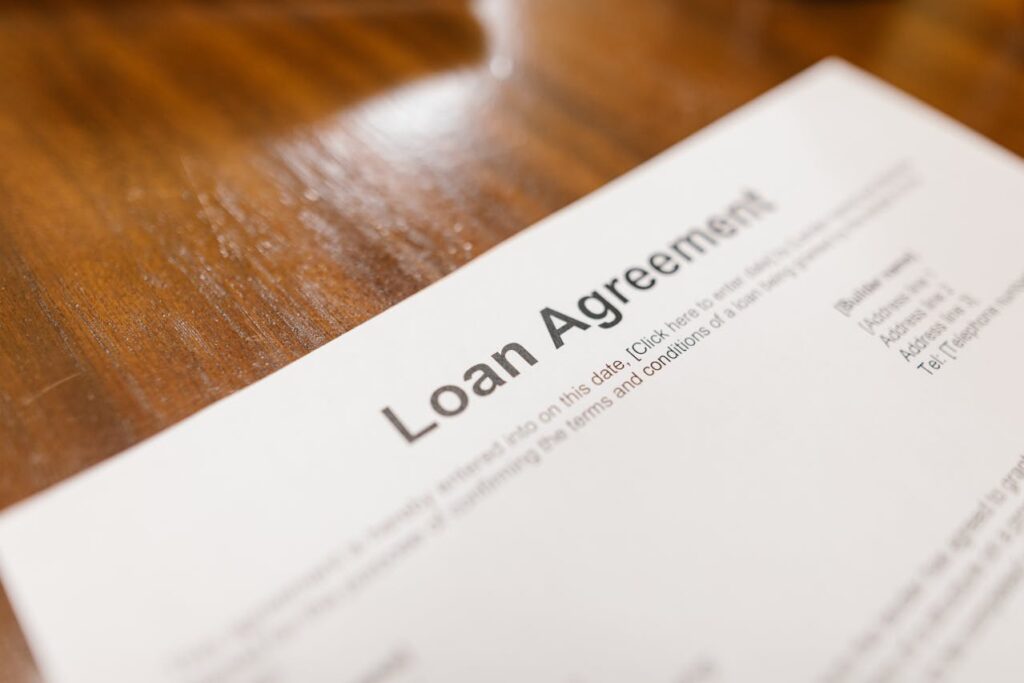As property values continue to rise, HELOCs have been a popular financing option for both investors and homeowners. In 2023, around 1.3 million HELOCs were originated with the average credit limit for one growing to $117,598 – a 1.7% increase from the previous year. Beyond that, another 500,000 HELOCs have already been issued in the first half of 2024.
For investors, a HELOC for investment property can be a great tool to tap into equity that’s sitting in another property. Whether you want to use the loan to fund repairs and renovations or take advantage of other investment opportunities, it’s a flexible financing solution to have in your arsenal.
In this complete guide, we’ll go over everything about HELOCS – from the basics of them to helping you determine if one is right for you. Keep reading to learn more!
What Is a HELOC?
A HELOC is short for a Home Equity Line of Credit, which is a flexible, revolving line of credit that lets you borrow against the equity you’ve built in a property you own. In contrast to a traditional loan that has set monthly payments, a HELOC acts more like a credit card – you only have to pay interest on the amount you draw from it. This structure gives you more flexibility to access funds as needed.
HELOCs usually have two different periods: a draw period, followed by a repayment period. The draw period is typically anywhere between 5-10 years and during this time, you can borrow and repay as needed. After that period is over, the repayment period follows and this is when any outstanding balance must be repaid.
With competitive interest rates and a revolving credit structure, HELOCs on investment properties can offer a convenient way to get access to funds without refinancing your entire property.
How Do You Get a HELOC for Investment Property?
Getting a HELOC for an investment property is a relatively easy process. Here are some key steps to follow to make sure you’re eligible and set up for success:
1. Find the Right Lender: Not all lenders offer HELOCs for investment properties, so start by researching lenders that have experience with real estate investment loans. At Defy, investment property loans are one of our specialties – book a free consultation with us to learn more about your loan options as a real estate investor.
2. Understand Eligibility Requirements: Requirements will vary by lender, but you can generally expect:
- A credit score of 620 or higher
- At least 20% equity in your property
- Proof of stable cash flow and/or income
- Specific debt-to-income (DTI) ratios vary by lender
3. Assess Property Equity: Calculate your available equity by subtracting your outstanding mortgage balance from the property’s current market value. The more equity you have, the higher your HELOC limit may be.
4. Apply and Complete Documentation: Be prepared to provide financial documentation, including tax returns, proof of rental income, and any relevant property documentation. This will help lenders assess your ability to manage the line of credit responsibly.

What Are the Pros and Cons of Getting a HELOC for Investment Property?
Pros of Getting a HELOC for Investment Property
- Flexible access to funds
- Only pay interest on the amount used
- Lower interest rates compared to credit cards and personal loans
- Potential tax benefits if the funds are being used for investment property expenses
- Doesn’t require you to refinance the primary mortgage
Cons of Getting a HELOC for Investment Property
- Limited availability for investment properties
- Variable interest rates, making it potentially challenging to budget
- Potential for over-leveraging
When Is It a Good Idea to Use a HELOC for Investment Property?
Getting a HELOC for investment property can be a great choice when it aligns with clear, income-generating goals. Since a HELOC provides financial flexibility, it’s ideal for short-term financing needs like property improvements or even down payments on another investment. Using a HELOC for these reasons can increase rental income or property value, which ultimately provides a boost to returns that justifies the cost of borrowing. Beyond using them to generate more income, HELOCs are also useful for covering emergency expenses or unexpected repairs. This can help you manage cash flow without having to liquidate any other assets.
Overall, a HELOC can serve as a cost-effective alternative to higher-interest financing options, making it a good idea when extra cash is needed here and there rather than in a lump sum. But keep in mind that it’s important to have a solid plan for using and repaying the funds since there’s a risk of over-leveraging if the debt isn’t managed responsibly.

Are You Able to Deduct a HELOC on Your Taxes?
The short answer is: Yes, you may be able to deduct HELOC interest on your taxes, but this depends on how you use the funds.
For a HELOC for investment property, interest is only tax-deductible if the loan proceeds are used specifically on investment-related expenses like property improvements or repairs that contribute to generating income. These costs can usually be claimed as a business expense, which reduces your taxable income. However, if the HELOC funds aren’t used for property expenses, like personal purchases, those amounts are generally not tax deductible.
If you plan to deduct HELOC interest on your taxes, make sure to keep clear records of how the funds are used and consult with a tax advisor to confirm your deductions are within IRS guidelines.
Can You Use a HELOC for a Down Payment on an Investment Property?
Yes, you can use a HELOC for a down payment on another investment property, but there are some things to consider before doing this.
A HELOC gives you access to funds without needing to liquidate other investments or take on other loans with higher interest rates, so many investors choose to do this to leverage their existing property’s equity to expand their real estate portfolio. While it can be a good strategy if managed properly, you should consider the added debt and make sure that the combined payments from the HELOC and the new mortgage are manageable, especially if your investment property isn’t generating income yet.
Despite the risk of over-leveraging, this strategy can still work well if the expected rental income or property appreciation can outweigh the cost of the HELOC, but investors should have a clear repayment plan to stay on track.
What Are the Alternatives to Using a HELOC for Investment Property?
Even though a HELOC for investment property can be a flexible financing option, they may not be for everyone. If a HELOC isn’t the best fit for your investment goals, there are several other options you can consider, each with their own unique benefits. Here are some alternatives to using a HELOC for investment property:
- Cash-Out Refinancing: With cash-out refinancing, you replace your existing mortgage with a new loan for a higher amount, using the difference as cash. This can offer a lower interest rate than a HELOC and longer repayment terms, but it involves refinancing your primary mortgage, which may not be ideal if you already have favorable terms.
- Home Equity Loan: A home equity loan provides a lump sum based on your property’s equity, similar to a HELOC but with a fixed interest rate and payment structure. It’s a good option if you prefer predictable monthly payments and don’t need revolving credit.
- Personal Loans: Personal loans are unsecured and can be used for various purposes, including investment property financing. Though they often come with higher interest rates, they don’t require using your property as collateral, which can be an advantage if you want to avoid additional liens on your real estate.
- Private Lenders: Private lenders offer flexible, short-term financing for investors who might not qualify with traditional banks. These loans are often quicker to secure but usually come with higher interest rates and fees. They can be beneficial for short-term investments or quick flips.
- Business Line of Credit: If you own a business and invest in real estate as part of your business activities, a business line of credit might be an option. It allows for flexible, ongoing access to capital, though qualification depends on your business’s financials and creditworthiness.
- Partnering with Investors: In some cases, bringing in a co-investor can help you pool resources without taking on debt. This arrangement could mean sharing profits, but it reduces financial pressure on any single individual and can bring additional expertise.
If you’d like to explore options for unlocking your property’s equity, schedule a free call with us at Defy and our mortgage experts would be happy to provide tailored advice and find a loan solution that fits your needs.

HELOC for Investment Property FAQs:
- What is a HELOC, and how does it work for investment properties?
A HELOC stands for Home Equity Line of Credit and it allows you to borrow against the equity in your property with a revolving line of credit. Similar to a credit card, you’re only required to pay interest on the amount you draw.
- Can I get a HELOC on any type of investment property?
HELOCs are typically available for residential investment properties like single-family or multi-family units, but not always for commercial properties. When shopping around for HELOCs, be sure to ask lenders if your property type qualifies.
- What credit score do I need to qualify for a HELOC for investment property?
The minimum credit score required to qualify for a HELOC for investment property depends on the lender and their requirements. At Defy, we require a minimum credit score of 620 or higher for our investment property HELOCs.
- How much equity do I need in my investment property to get a HELOC?
Lenders typically require at least 20-30% equity in the property, meaning you should have a loan-to-value (LTV) ratio between 70-80%.
- What are the typical interest rates and fees for a HELOC for investment property?
Interest rates for HELOCs are typically variable, meaning they’re based on a benchmark rate, such as the prime rate. The exact interest rate you’ll be offered depends on the lender and your credit score. As for fees, you can expect origination fees, annual fees, property appraisal costs, and more depending on the lender’s fee structure.
- Are there any risks associated with getting a HELOC for investment property?
The main risk of getting a HELOC for an investment property is over-leveraging yourself and defaulting on payments, which could lead to potential foreclosure. Another risk is fluctuating interest rates, which could make payments challenging to budget.
- What happens if I can’t make payments on a HELOC tied to my investment property?
If you can’t make payments on a HELOC tied to your investment property, this could result in penalties and eventually lead to foreclosure on the property. In the long run, it can also negatively impact your credit score, making it more difficult to qualify for loans in the future.




